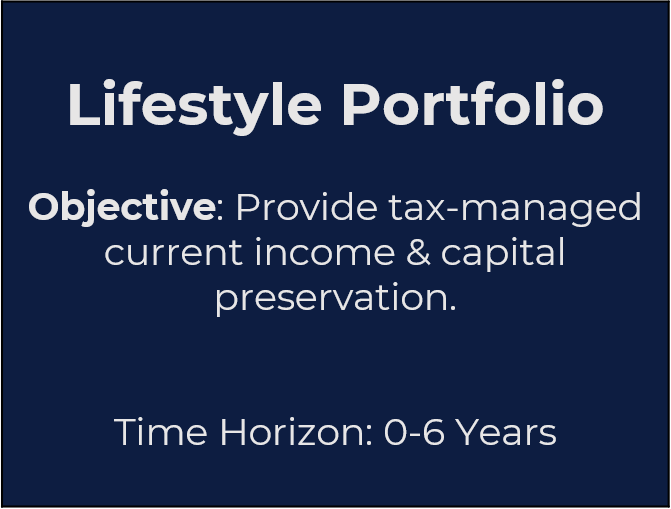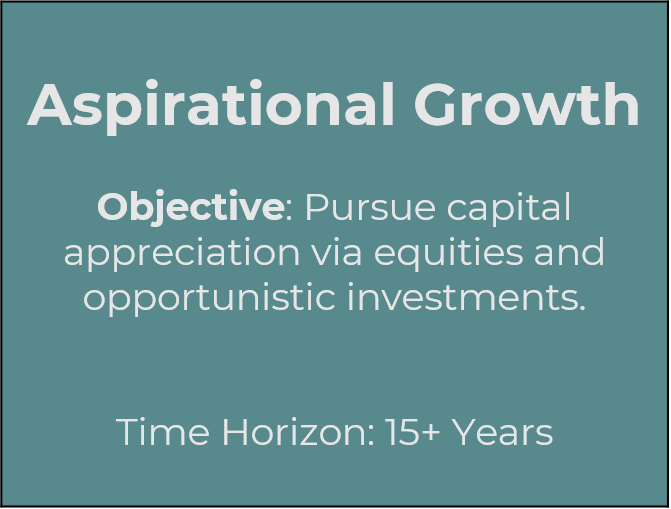investment Management
As fiduciaries, our advice reflects, first and foremost, the best interest for each client. We allocate assets across three purpose-driven portfolios to strategically manage cash flow and help clients meet their short- to long-term goals and objectives.
Step 1:
Build Investor Profile & Complete Loss Aversion Questionnaire
We know from the study of behavioral economics that most people do not have the ability to accurately define risk but do have the ability to more accurately define loss. Understanding the relationship between the goals of the client and their personal loss aversion levels is what initially defines the purpose for each investment they make.
Step 2:
Customize Investment Policy & Construct Risk-Balanced Asset Allocation
Once a client has defined their investor profile, we work with them to customize an investment policy. This policy generally encompasses the work for which we have been engaged but often times includes a broader set of assets. This is to ensure the client is properly structuring their entire portfolio with a risk-balanced asset allocation in mind.
Step 3:
Invest in Purpose-Driven Portfolios with goal of:
Producing positive returns during periods of economic growth
2. Protecting capital during periods of economic contraction
3. Preserving purchasing power during periods of increased inflation
A well diversified portfolio will focus on balancing the portfolio to account for all three market environments listed above. In order to develop a Purpose-Driven portfolio, having a proper understanding of when the asset will be utilized for cash flow is paramount. We believe the optimal outcome for a client lies at the intersection of a risk-balanced portfolio and properly timed cash flows.
While the world rarely provides us an optimal outcome, we believe a customized allocation built upon the strategies below will come much closer to meeting our client’s goals.
This framework may be implemented with low-cost, tax-efficient, investments but is often enhanced through the careful overlay of private investments purchased toward a specific purpose. Click here to learn more about our approach to private and direct investments.
Investing The Way It Should Be
Investors turn to diversification to balance their portfolios and limit the potential for large losses. Unfortunately, the most traditional balanced portfolio (60% stocks and 40% bonds) is still highly correlated to the stock market. A 60% allocation to equities generates nearly all of the volatility in the portfolio. This still leaves investors exposed to substantial losses during severe stock market downturns. Further, stocks and bonds alone are ill-suited to hold up during periods of rapid inflation.
At SineCera Capital, it is a core belief that diversified portfolios should be constructed to pursue both acceptable risk-adjusted total returns and downside protection. The objective... to provide clients with a customized blend of growth and income during expansionary, contractionary, and high-inflation environments.
Our Thoughts
Blog Posts on All-Weather Core & Risk Parity








